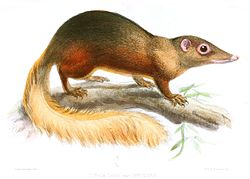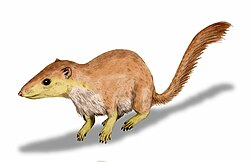| Apatemyidae Temporal range: | |
|---|---|
 | |
| Heterohyus nanus | |
| Scientific classification | |
| Kingdom: | Animalia |
| Phylum: | Chordata |
| Class: | Mammalia |
| Superorder: | Euarchontoglires (?) |
| Order: | † Apatotheria Scott & Jepsen, 1936 |
| Family: | † Apatemyidae Matthew, 1909 |
| Genera [1] | |
| |
Apatemyidae is an extinct family of placental mammals that took part in the first placental evolutionary radiation together with other early mammals, such as the leptictids. Their relationships to other mammal groups are controversial; a 2010 study found them to be basal members of Euarchontoglires. [3]
Contents
Common in North America during the Paleocene, they are also represented in Europe by the genus Jepsenella . [4]




